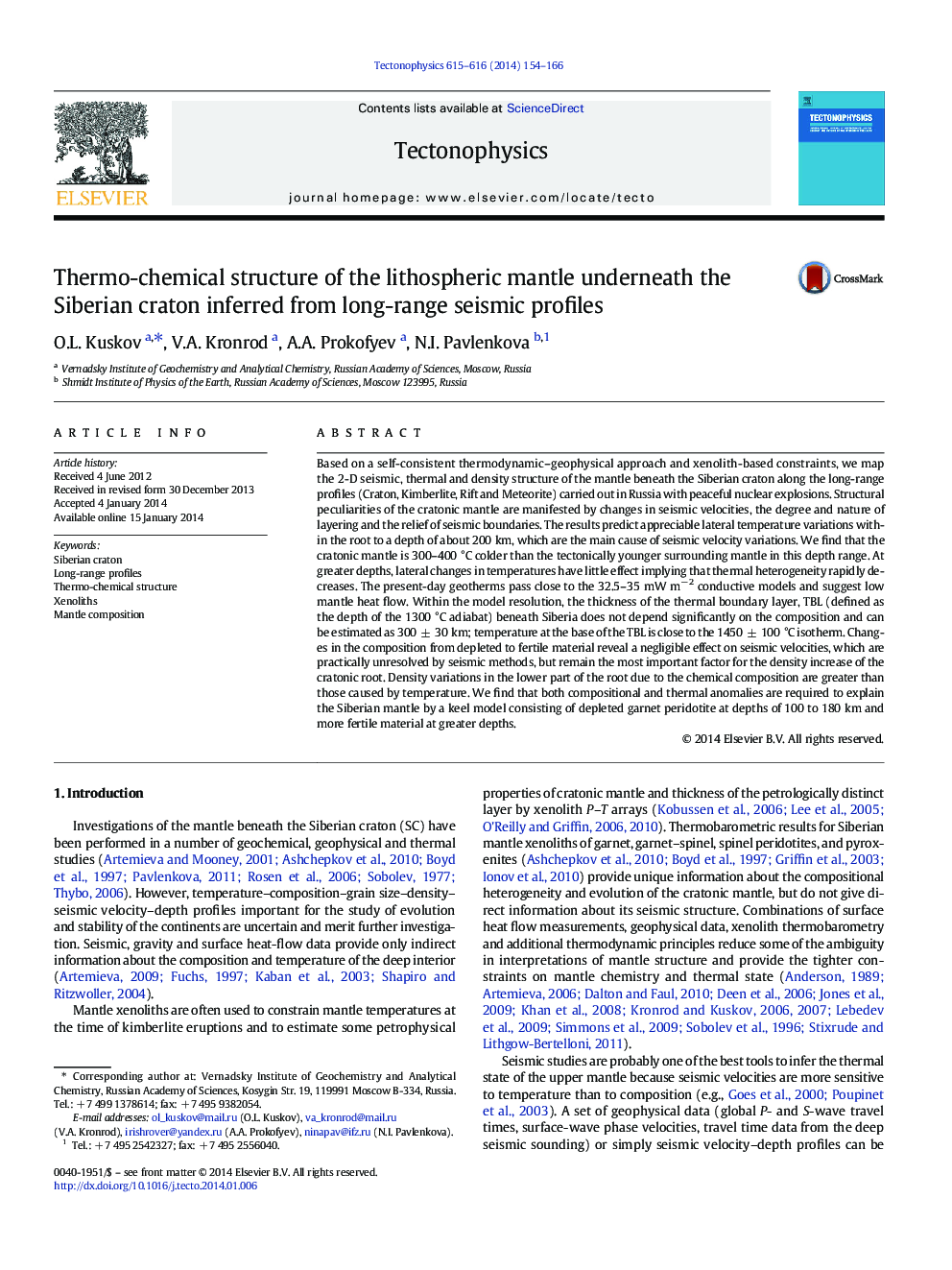| کد مقاله | کد نشریه | سال انتشار | مقاله انگلیسی | نسخه تمام متن |
|---|---|---|---|---|
| 6433913 | 1636773 | 2014 | 13 صفحه PDF | دانلود رایگان |
- P-velocities from the seismic profiling with peaceful nuclear explosions
- 2-D thermal and density structure of the Siberian cratonic mantle
- Temperature-composition-density-velocity-depth profiles
- Thickness of the thermal boundary layer
- Constraints on the internal structure of the mantle in central Siberia
Based on a self-consistent thermodynamic-geophysical approach and xenolith-based constraints, we map the 2-D seismic, thermal and density structure of the mantle beneath the Siberian craton along the long-range profiles (Craton, Kimberlite, Rift and Meteorite) carried out in Russia with peaceful nuclear explosions. Structural peculiarities of the cratonic mantle are manifested by changes in seismic velocities, the degree and nature of layering and the relief of seismic boundaries. The results predict appreciable lateral temperature variations within the root to a depth of about 200 km, which are the main cause of seismic velocity variations. We find that the cratonic mantle is 300-400 °C colder than the tectonically younger surrounding mantle in this depth range. At greater depths, lateral changes in temperatures have little effect implying that thermal heterogeneity rapidly decreases. The present-day geotherms pass close to the 32.5-35 mW mâ 2 conductive models and suggest low mantle heat flow. Within the model resolution, the thickness of the thermal boundary layer, TBL (defined as the depth of the 1300 °C adiabat) beneath Siberia does not depend significantly on the composition and can be estimated as 300 ± 30 km; temperature at the base of the TBL is close to the 1450 ± 100 °C isotherm. Changes in the composition from depleted to fertile material reveal a negligible effect on seismic velocities, which are practically unresolved by seismic methods, but remain the most important factor for the density increase of the cratonic root. Density variations in the lower part of the root due to the chemical composition are greater than those caused by temperature. We find that both compositional and thermal anomalies are required to explain the Siberian mantle by a keel model consisting of depleted garnet peridotite at depths of 100 to 180 km and more fertile material at greater depths.
Journal: Tectonophysics - Volumes 615â616, 5 March 2014, Pages 154-166
